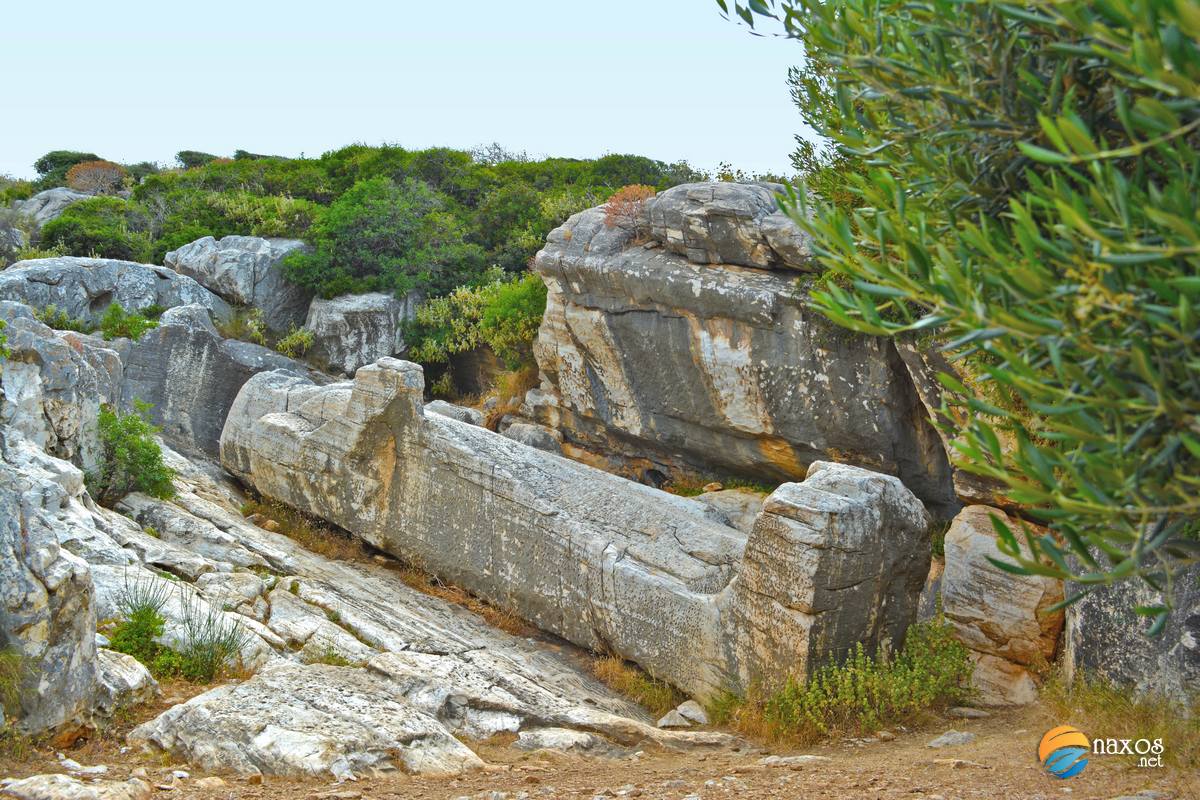Naxos goes a long way back, with various civilizations flourishing on the island since the 4th millennium BC and it is speculated that the first inhabitants emigrated from Thraki (Thrace), the northeastern region of Greece.
According to the myth, while seeking women companions, King Voreas’s son, Voutis, arrived in central Greece, at the region of Thessaly, whereupon he pursued and abducted several of the Bacchae nymphs and brought them to Naxos. The nymphs included Koronis and Iphimedia.

The earliest settlements on the island date to the Neolithic era and according to Archaeological finds, they indicate a developed society toward the end of that period.
For 200 years the Thracians dominated the island and were succeeded by the Carians who were led by Naxos and hailed from Asia Minor. Naxos, their leader, is who the island is named after.
Although much older elements from the Homeric era survive in characteristic idioms still spoken on Naxos today, the first important period of civilization on Naxos is the Cycladic, in the 3rd millennium BC. Through the various sites found and resulting digs, there is evidence that the island was densely populated by small settlements spread on its eastern side.
One such characteristic hamlet of the Cycladic era has been discovered near Panormos, at the Korfari position in Amygdalies.
However, at Grotta, where main town Chora is today, there was a larger and better developed settlement, that had carefully constructed houses. Numerous pottery items that were used, have been discovered. In virtually in all the tombs at the cemeteries of the era throughout the island, masterpieces of art and style have been found.
Due to all these factors and from archaeological research, Naxos appears to be one of the most important centers of the Proto-Cycladic civilization. So persuasive is this evidence that archaeologists when referring to particular aspects or phases of this period signify locations with particular names that characterize their importance and relevance.
For instance, when we refer to the local civilization of Grotta-Louros, we are in fact referring to the Proto-Cycladic I phase (3200-2800 BC), e.g. the “Louros-type” idols from the Louros cemetery in the Sagri area.
Naxos was a powerful trade and commerce centre and as such had its own navy. In 734 BC the island offered its navy to the city state of Chalkis (today’s Chalkida on the island of Euboea), to transport colonists to Sicily. In fact, one of the first Greek colonies was named Naxos. Even today there are villages in Sicily where one can distinguish ancient Greek dialects.
As a rule, archaeological finds from the Mycenean and Geometric eras, are highly aesthetic, in particular the ceramic items. Prime examples are the gigantic Kouroi statues of Naxos which lie unfinished at the two ancient and now disused marble quarries of Melanes and Apollonas. It is not known why these statues were abandoned and subsequently, it is speculated that they may have been so due for a variety of reasons. The statue of Artemis is another famous find also dating to this era. Others are the Sphinx of Delphi, the famous Lions statues, the House of Naxians and a large number of votive offerings at the sanctuary of Delos and other prominent sanctuaries.
It is believed that the plastic arts (clay hand-craft) were born on Naxos. Large-scale plastic arts showing all the elements of the monumental developed in Greece during the Archaic period. This fact, combined with the small-scale plastic art (idols) developed during the 3rd millennium, contributed to this assumption. Another factor is probably the abundance of marble. Emery, mined until the 1950’s is a Naxian product, was also used in the final stages of polishing marble works from ancient times.
Naxian craftsmen were much sought after and apparently demanded high fees which contributed to their wealth. Some even donated large and costly works of theirs to the gods. This may have also been a factor that led to the rise of the monumental form that influenced the entire Greek architecture, particularly that of the Ionian school of marble sculptors.
During the 7th century, the formation of an oligarchic society took place which was ruled by sizeable and powerful nobility. They lived mainly on the hill of present-day Kastro in Chora, or were spread out in the various medium-size towns of Naxos Island. The majority of the populace was engaged in agriculture, animal husbandry, fishing and hand-crafts.
Take a quick tour on Naxos island and discover its most impressive features. You may start with the following:
What's new (or old) on Naxos, from our blog articles.